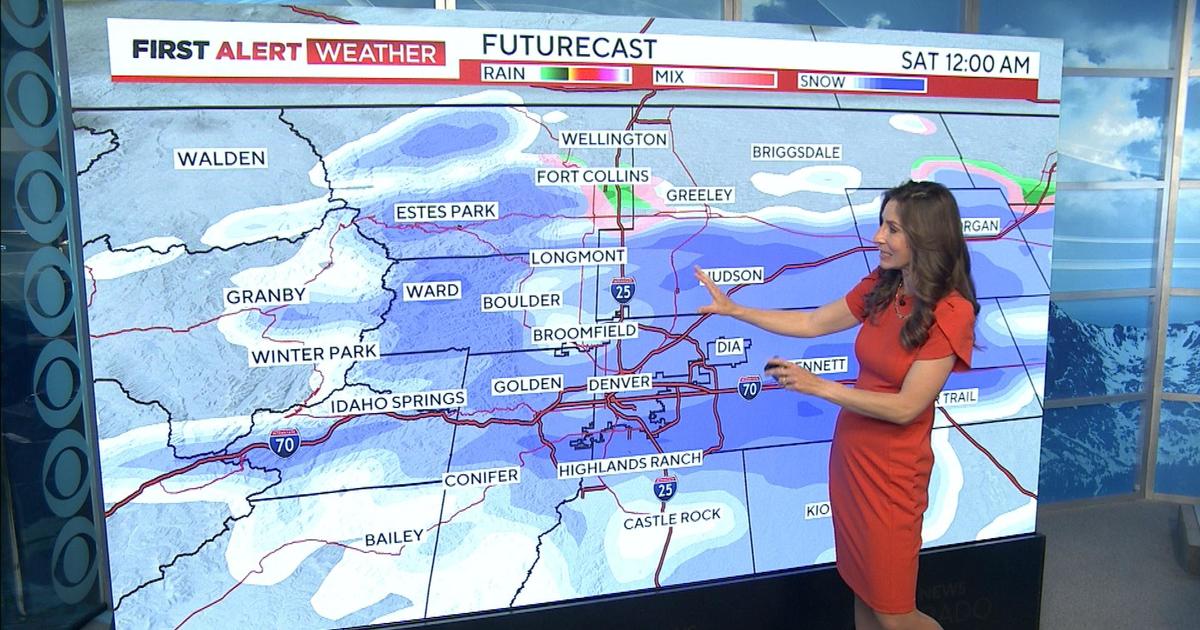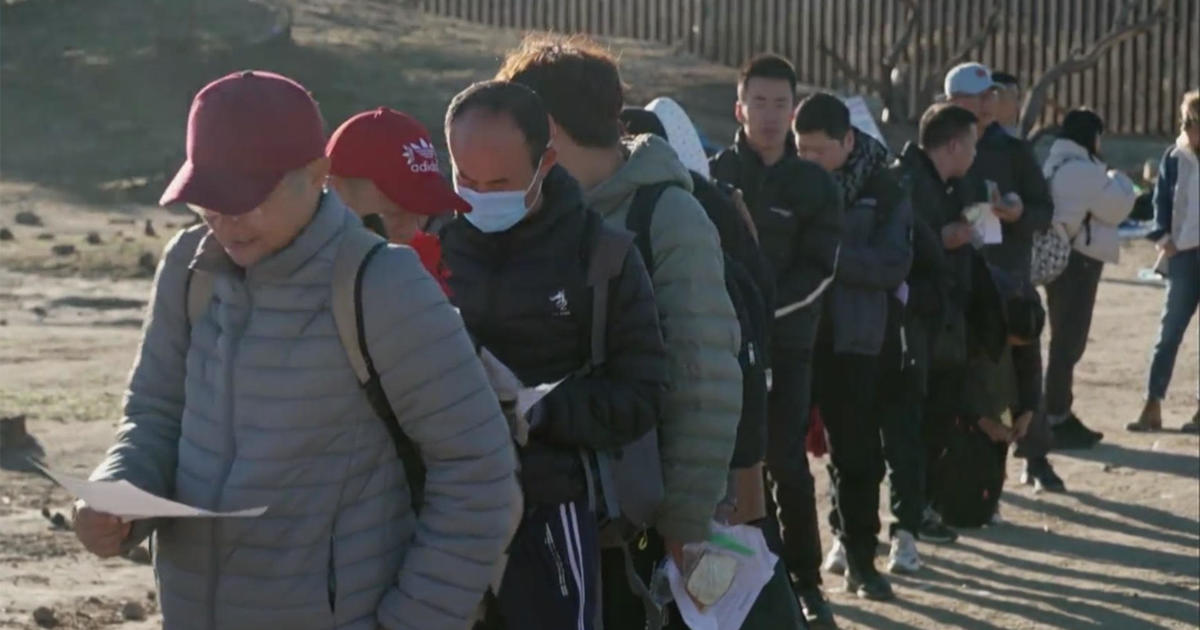Colorado River Seen As Depleting Regional Resource
LAS VEGAS (AP) - The federal government isn't going to tap the Missouri River to slake the thirst of a drought-parched Southwest, the government's top water official said Wednesday.
But rising demand and falling supply have water managers in the arid West considering a host of other options to deal with dire projections that the Colorado River - the main water supply for a region larger than the country of France - won't be able over the next 50 years to meet demands of a regional population now about 40 million and growing.
Interior Secretary Ken Salazar issued what he termed "a call to action" with a three-year study of the river, its flows and its ability to meet the future needs of city-dwellers, Native Americans, businesses, ranchers and farmers in seven Western states.
"We are in a troubling trajectory in the Colorado River basin, as well as the Rio Grande basin," Salazar told reporters on a conference call outlining the math in the findings of the Colorado River Basin Water Supply and Demand Study.
Salazar, who oversees water managers and dam operators at the federal Bureau of Reclamation, dismissed as politically and technically impractical some ideas in the study, including piping water from the nation's heartland or towing Arctic icebergs south to help such thirsty U.S. cities as Denver, Los Angeles, Las Vegas and Phoenix.
He said he wanted to focus instead on "solutions that are out there that will help us."
"There is no one solution that is going to meet the needs of this challenge," Salazar said. "We need to reduce our demand through conservation. We also need to augment supply with practical measures."
Salazar and Bureau of Reclamation officials warned that the Colorado River's historical 15 million acre-feet per year flow has been reduced by 12 years of drought to about 12 million acre-feet. Officials say an acre-foot can meet the water needs of up two families per year.
Water interests and the states of Arizona, California, Colorado, New Mexico, Nevada, Utah, and Wyoming together lay claim to all the water in the river and then some.
Mexico also has a stake in the river, and officials last month set new rules to share Colorado River water south of the border and let Mexico store water in Lake Mead near Las Vegas.
The study projects that by 2060 the river flow could fall 3.2 million to 8 million acre-feet short of regional needs.
A "very believable estimate" using climate change scenarios projects the river flow increasing to just 13.7 million acre-feet per year by 2060, said Kay Brothers, a former Southern Nevada Water Authority executive in Las Vegas who co-managed the study.
"We're going to have problems in the future meeting the demands of the Colorado River basin," Brothers said. "We have to begin now starting to put measures in place to meet the imbalance and prepare for a drier future."
Even before the report was released, some advocates criticized it as a "fundamentally flawed," and based on inflated projections of the amount of water in the river and the number of people in the region.
"States cooked the books to show higher demand for water consumption to set up a federal bailout on expensive water projects," said Molly Mugglestone, director of the advocacy group Protect the Flows.
But Anne Castle, assistant Interior secretary for water and science, said the data came from the best experts, science information available. And Carly Jerla, a federal Bureau of Reclamation analyst, told reporters the range of future growth scenarios went from a small increase to doubling the regional population.
Another advocacy group, the Environmental Defense Fund, was measured in its assessment.
"The Colorado River is the lifeblood of the dry West," said Dan Grossman, an official with the Boulder, Colo.-based organization. "We can't keep bleeding the river dry. The basin study says loud and clear that it's time for a new approach that puts conservation first."
The report considered almost 160 suggestions, Brothers said.
Salazar bluntly dismissed proposals like the multi-billion dollar pipeline running some 670 miles from the Missouri River to Colorado. Tapping the Mississippi, Green, Bear, Snake, Yellowstone and Columbia rivers also made a list of options that Bureau of Reclamation spokesman Kip White said weren't currently getting serious consideration.
But Salazar left open the discussion about eliminating thirsty invasive but prolific plants like tamarisk, capping reservoirs and irrigation canals to reduce evaporation, and desalting seawater.
Salazar noted that the federal government already operates a desalination plant near Yuma, Ariz., to treat saline agricultural irrigation water as it returns to the river.
The report also cites the possibility of entities increasing cooperation to swap water credits and "bank" the valuable resource.
Advocates on all sides seized on elements of the 163-page report to bolster their positions.
Boulder, Colo.-based Western Resource Advocates said the study should quickly spur states "to press the 'go' button" on conservation, reuse and efficiency measures.
Denver-area water chief Jim Lochhead issued a statement urging a go-slow approach.
"While this is a critical issue for Colorado, we have time to approach solutions thoughtfully," he said.
In Wyoming, the Family Farm Alliance pointed to the implications for food production in study estimates that irrigated acreage in the Colorado River basin will decrease by 2060.
"Policy makers and Colorado River stakeholders must understand the critical implications of taking 6 to 15 percent of existing irrigated agriculture out of production," alliance President Patrick O'Toole said.
In Las Vegas, regional water chief Pat Mulroy at the Southern Nevada Water Authority, said she was more worried about a drier climate becoming permanent than about the ability of interdependent and river-dependent entities to work together.
"You can't conserve your way out of drought," she said.
Matt Niemerski, with the Washington, D.C.-based advocacy group American Rivers, said climate change and population growth in the region make status-quo management of Colorado River water resources "untenable."
"This is the start of the conversation," Niemerski said, "about how the tens of millions of people who depend on the river for water are ultimately going to be able to live there."
- By KEN RITTER, Associated Press
(© Copyright 2012 The Associated Press. All Rights Reserved. This material may not be published, broadcast, rewritten or redistributed.)



